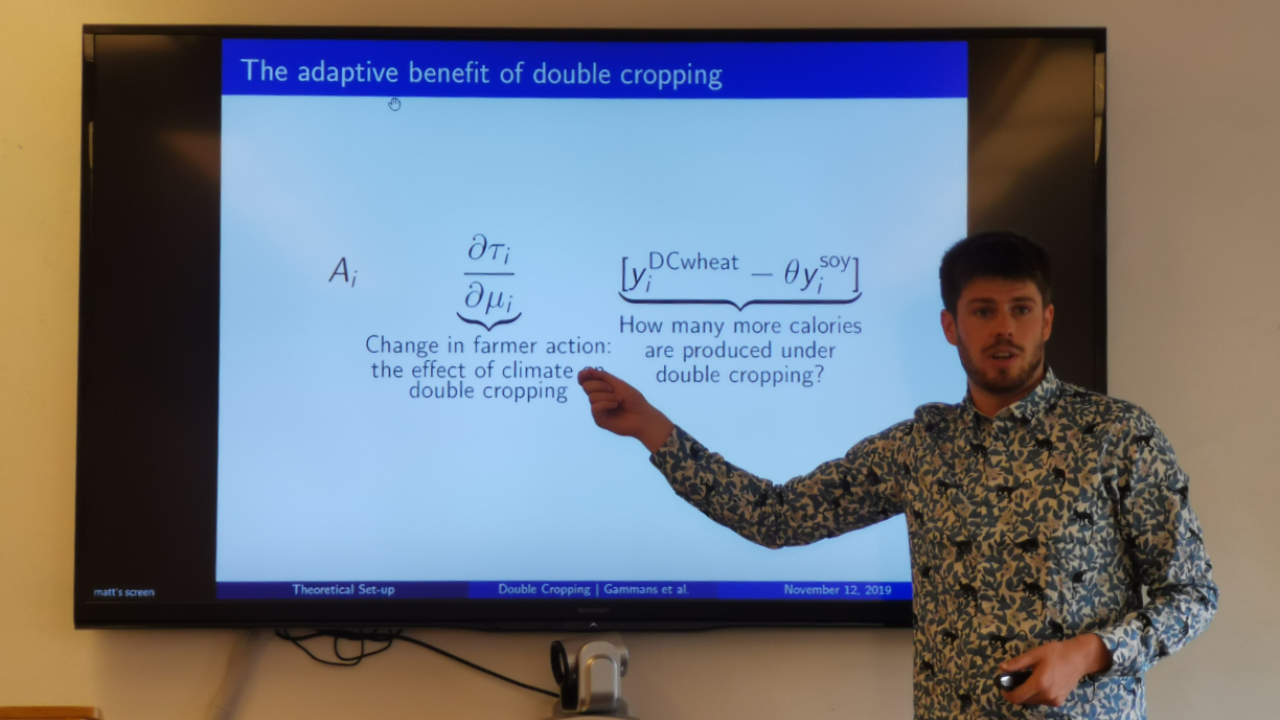
Lab Seminar - Double cropping as an adaptation to climate change in the United States
Matthew Gammans presented his research on agriculture adaptation to climate change. This work is a collaboration with Pierre Mérel and Ariel Ortiz Bobea. Growing evidence indicates that climate change will reduce the yields of key crops in the United States. Biophysical crop models suggest that warming will also increase opportunities for double cropping by reducing time to maturity and/or expanding the frost-free period. These models are tailored towards assessing agronomic suitability and do not account for economic incentives facing farmers. Matt and coauthors implicitly account for such factors by linking high-resolution land cover data with detailed soil and climate data to explain farmers’ propensity to double-crop soybeans with winter wheat in the Eastern United States. Double-cropping propensity exhibits a robust non-linear relationship with respect to growing degree days, with higher temperatures increasing double cropping in cool regions but having little effect on, or even decreasing, double cropping in warm regions. Their estimates imply that under current economic conditions, a 3°C warming would result in relatively large double-cropping increases in cooler regions, translating to a net increase of 4.6 percentage points in the overall share of soybean acreage double-cropped with wheat. A fixed-effects panel model of county yields further indicates that yields of double-cropped soybeans are about 12.1% lower than those of single-cropped soybeans, an estimate consistent with agronomic evidence. Accounting for both effects, Matt and coauthors project that climate change will induce a shift in land use from single to double cropping that increases calorie production by up to 5% under a 3°C warming scenario according to our preferred model, offsetting a small fraction of predicted yield declines.
Matt is currently on the job market and this paper is his job market paper. The manuscript is available on Matt's website.